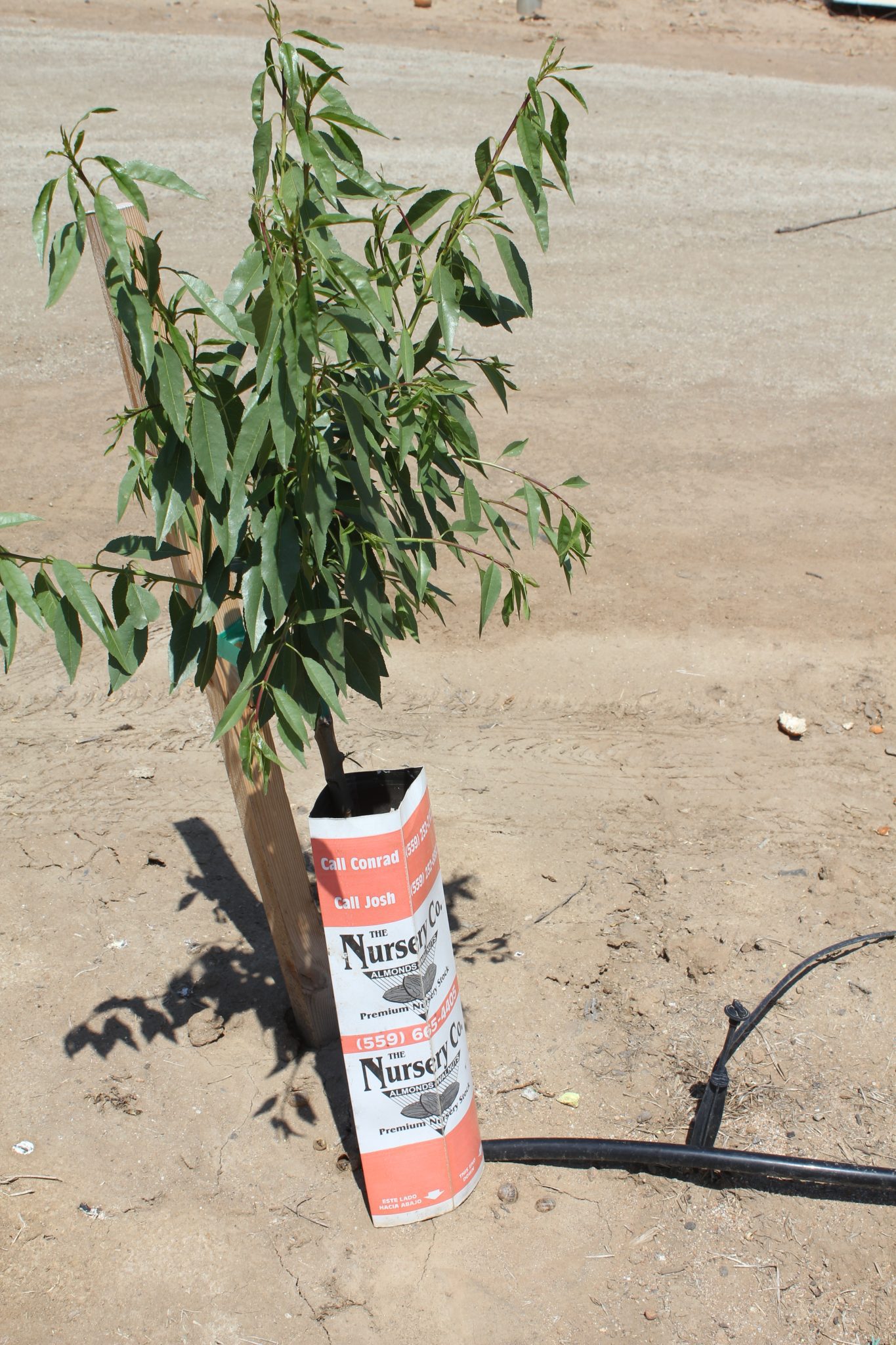
Site evaluation and preparation prior to planting, care of potted or bare root nursery trees after they arrive at the orchard site and inspection of the new trees are integral parts of establishing a new tree nut orchard.
In a UCCE webinar series, Orchard Systems Advisor Mohammad Yaghmour detailed best practices for a uniform, productive and healthy orchard at the planting stage.
Rootstock selection, in the case of almonds and walnuts, is one of the most important decisions for a new orchard, Yaghmour stressed. These are site-specific decisions and can offset or mitigate conditions at the orchard site.
Inspection and care of new trees, potted or bareroot, should be done upon arrival from the nursery. If planting is delayed, bareroot tree roots should be covered to keep moist. Bare root trees can also be ‘heeled’ in fumigated soil or sawdust until planted.
Inspection of trees should be done to make sure the trees are healthy. They could be affected by root diseases or have structural issues with roots due to time in containers. Inspect trees for signs of Phytophthora, crown gall, crown rot and cold storage canker disease of prunus when planting bare-root stone fruit trees that had been in cold storage. Cold storage canker is caused by Fusarium spp. and Cylindrocarpon spp. These diseases can lead to poor tree vigor and gumming and may lead to tree collapse and mortality. In the case of crown gall, there are few management practices, including use of Agrobacterium tumefaciens strain K-84 as a preventive biological control agent before planting. Another reason why growers should inspect their trees is to avoid trees with abnormal root structure that may affect tree growth.
If hand-planting, the hole should be deep and big enough to accommodate the tree roots. Place the tree higher than the nursery soil level and allow three to six inches of settling in the hole. When planting bareroot trees, it is very important to plant them in a hole big enough to accommodate the root system and avoid pruning the roots except for broken or damaged roots. If the roots are planted in smaller holes, then this may lead to root kinks or create the potential of the root system to girdle the base of the tree when trying to wrap the roots around the base to make them fit in a small hole rather than digging a bigger hall. Such practices may lead to poor tree growth and/or structural issues and may predispose trees to diseases.
If planting new trees in heavy soils, berms should be established before planting. The ridges should be 8 to 10 inches high. Planting on berms will help drain water away from the crown area to avoid diseases or saturation of the root system. Microsprinklers or drip emitters should not be placed near the crowns to minimize favorable conditions for crown and root rot. Emitters can be gradually moved farther from trees as they become established.
Yaghmour also noted these steps in planting procedure: the graft union should always be above the soil line, air pockets can be eliminated by tamping the soil around the roots, apply one to three gallons of water per tree, top the tree at 36 to 42 inches and use trunk protectors and paint trunk with whitewash to avoid sunburn.

Cecilia Parsons
Cecilia Parsons has spent the past 30 years covering agriculture in California for a variety of newspapers, magazines and organizations. During that time she has been fortunate to witness some of the important events that have shaped this diverse industry and worked hard to examine and explain these events for readers.
When Cecilia first moved to the San Joaquin Valley in 1976, her first journalism job was at a small daily newspaper where she covered “farm news.” From there she branched out to writing for a dairy magazine and a regional weekly agriculture publication.
Cecilia is part of a farming family from the rural community of Ducor where she also raises purebred sheep and is attempting to master versatility ranch horse riding.










